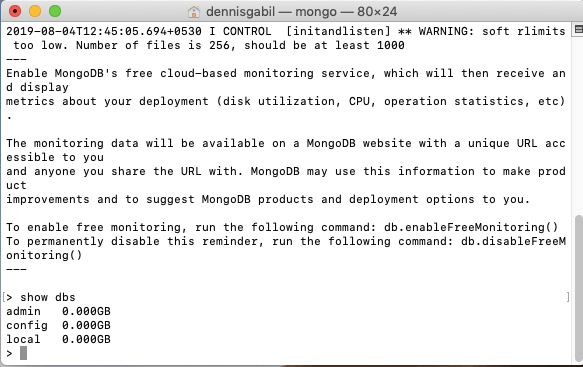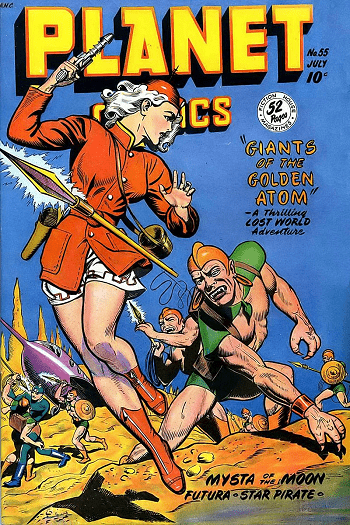MongoDB: Create Database
Before we store data as documents or work on them, we first need to create a database.
In MongoDB, a database consists of collections; a collection in turn is a grouping of documents. A collection can only exist within one database.
Now if you are using a Mac, open your terminal and start the Mongo Daemon first.
$ mongod
Next, open a new terminal and start the Mongo Shell.
$ mongo

If you are using Windows, go to the /bin directory and double-click on the Mongo Daemon mongod.exe. And in the same /bin directory, double-click on mongo.exe next. This is the Mongo Shell from where you will be entering commands.
Now there are a few default databases in MongoDB, like admin, config and local . We will list all the databases with the following command
$ show databases
or
$ show dbs
You will find the admin, config and local databases listed by default.
Now unlike in SQL, there is no straight-forward command as "CREATE DATABASE" to create a database in MongoDB. To create a database in MongoDB, we first need to switch to it using the use command, and later add at least one record (document) to a collection in it.
Suppose we intend to create a database called books. Switch to it first using the use command.
$ use books
The number of characters in a database name should be less than 64 characters.
Now the above use command does not merely create a database. If you run
$ show databases

you will find that your newly "created" books database is not in the list. You need to store at least one document in a collection.
We will create a new collection called comics and will insert the details of the following comic book as a document into it: Planet Comics, No. 55 published on July, 1948.
 Cover scan of Planet Comics, No. 55 by Joe Doolin, via Wikimedia Commons. Public Domain
Cover scan of Planet Comics, No. 55 by Joe Doolin, via Wikimedia Commons. Public Domain
$ db.comics.insert({
no: 55,
title: 'Planet Comics',
year: 1948
})
Now if you list all databases again,
$ show dbs
you will find the new database books listed.